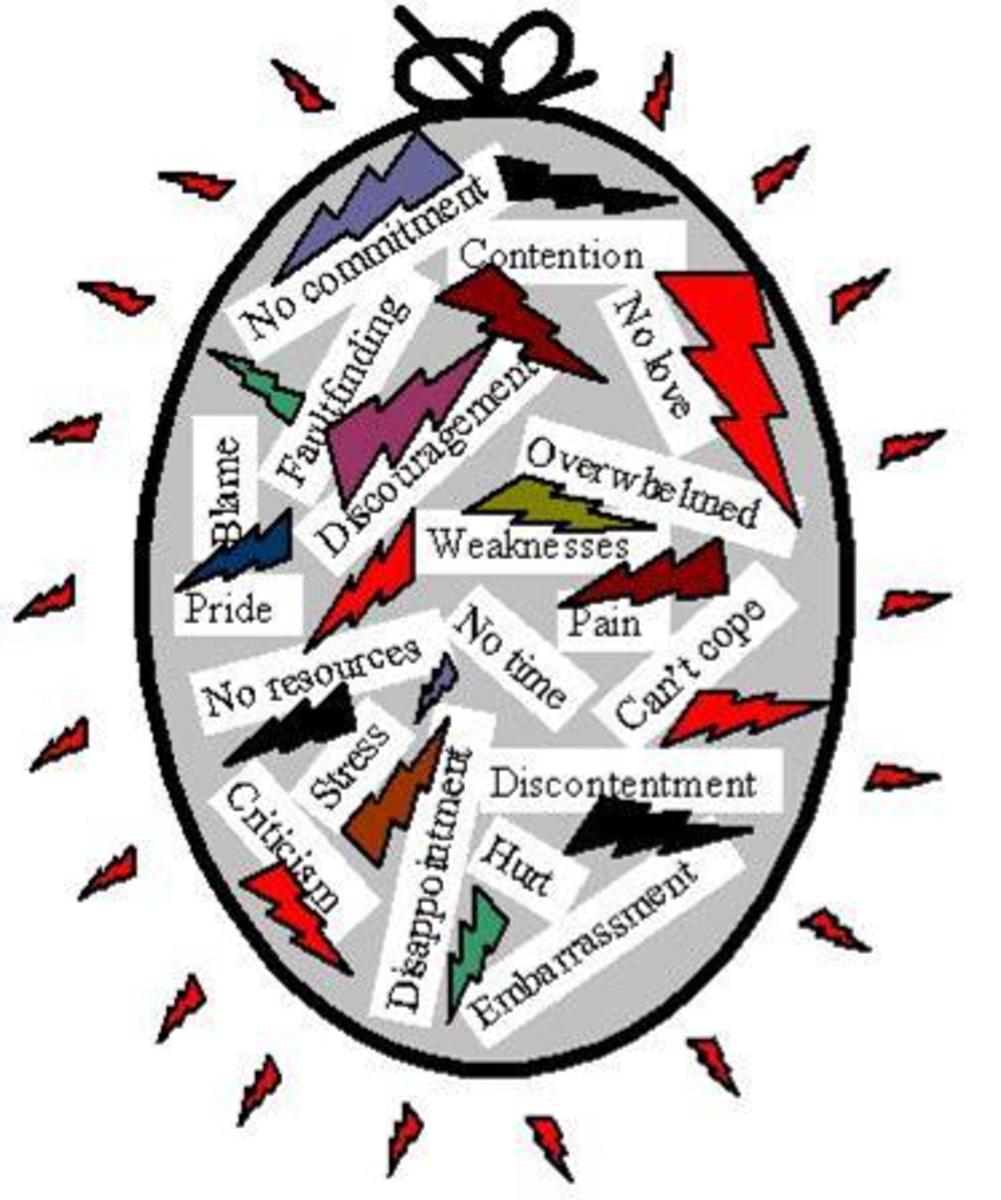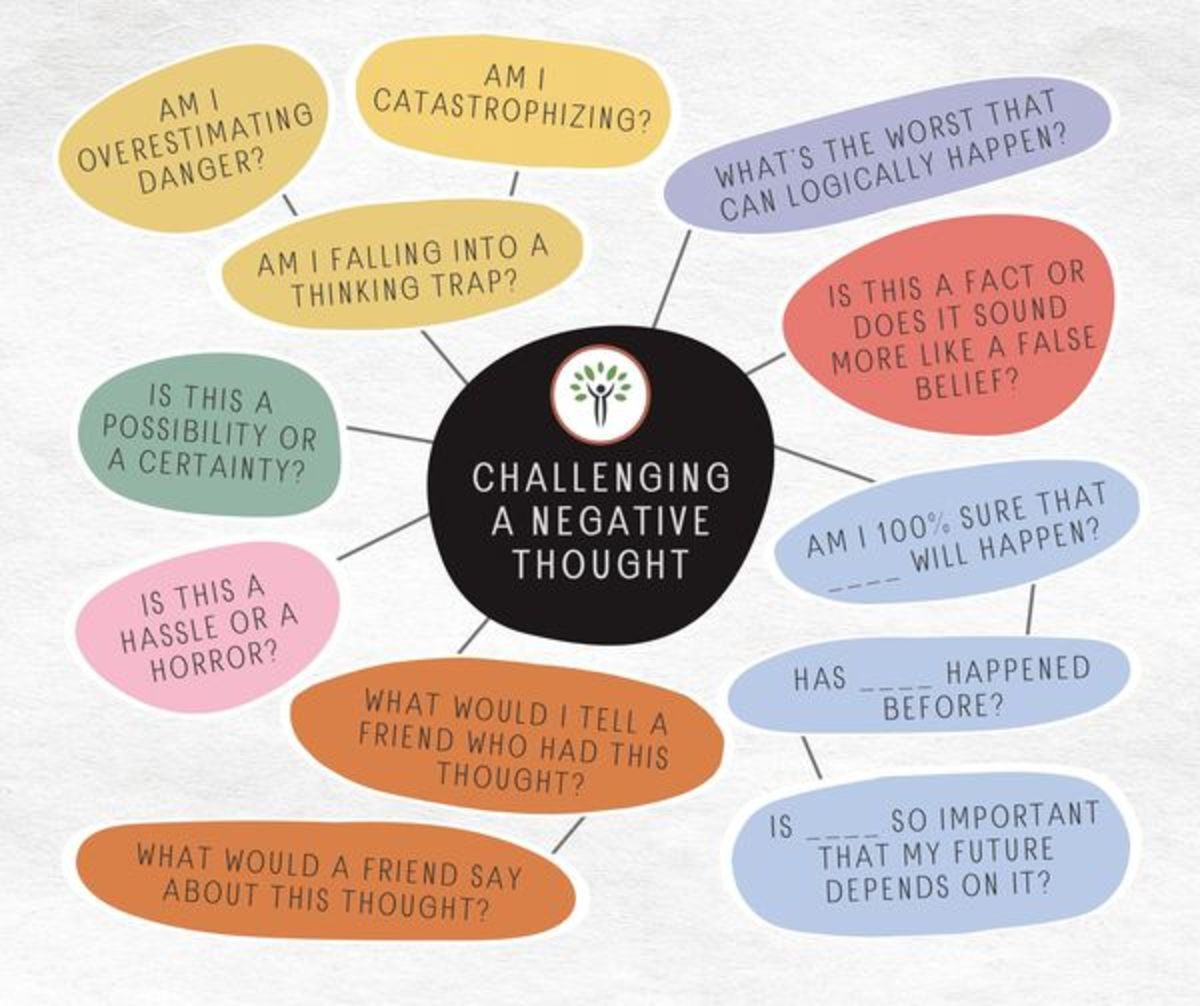How to Challenge Your Self

Challenging your thoughts
Today, I'm gonna show you how to challenge cognitive distortions, and this involves using a thought record.
Challenging your thoughts is called cognitive restructuring, and it's a technique used in cognitive behaviour therapy. You can do this on your own, but of course it works better when you have a therapist, guiding you and helping you work through it.

How to Challenge
You do this in two stages.
The first stage is to recognize the thought and record it, and the second is to challenge the thought.
So, how do you recognize an automatic thought?
Start with when you first noticed feeling low or some other negative emotion, like anger. Take a minute to ask yourself, "What was going through my mind just then?" Then, pull out your thought record and write down the situation, the emotions and the body sensations you experienced, and the actual thoughts you had.
Another way to recognize this is when you notice a shift in your emotions, so not only just a negative emotion but when there's a change. And the shift is a sign that you may be, you may have interpreted something based on a distorted thought.

How do you do it
Here's how you do it. For the situation, you wanna put the date and time. Then you wanna think about who you were with, what you were doing, and where you were.
Not down what was happening just before you noticed the shift in your emotions. Now, you may not have time to write an essay, but being able to capture just even a few details can help you fill this out more later.
Then, next, you wanna describe your emotions and your body sensations. What did you actually feel? You can usually write an emotion in one word, like angry, humiliated, empty.
Do you have trouble recognizing your emotions? That's a separate issue. Now you wanna rate the strength of the emotion from zero to 100%, and this number is your own estimation so just so that you have a way to quantify your feelings.
The last thing you wanna do is record what you felt. Did you feel a lump in your throat, head pain, butterflies in your stomach? Then you wanna record your thoughts or images that went through your mind just before you had the change in what you were feeling.
Some questions that you can ask yourself to get at this are things like
- What were you saying to yourself?
- How did that situation affect your present or your future?
- Was it threatening to you in some way?
Once you record your thought, rate how much you believe it on a scale of zero to 100. Zero means that you don't really believe it at all even though the though popped into your mind, and 100 would be that you completely believe it.

Now, this is a lot of information to take down, and it takes practice to be able to observe yourself like this. It's not realistic that you can get down every thought, and you don't wanna even try for that, but the more you do it, the more automatic it can become.
Since you're trying to catch the thought as they happen, you may not be able to write all of this down at first, but you can still not down a few basic facts, then fill in the rest later. Then onto stage two, challenging your thoughts, and there's a few ways that you can do this.
Take one of the thoughts from your thought record and run it through a trial. The defence will argue that the thought is true and the prosecution argues that the thought is false. You will argue for both the defense and the prosecution, and then you'll act as the judge to make the final decision. For this exercise, you use this worksheet.
Start with the negative thought you had. If it's a question like, "Why am I such a failure?" turn it into a statement, "I'm a failure." If it's an image in your head, like the image of you losing your job, turn that image into a thought by answering the question, "What does that image say about me?" Maybe it says that your boss has it out for you. Then that becomes the thought for you to challenge.
Then, for the defence argument, write down the evidence that the thought is true. And you don't censor this. Just write down everything that you can think of that proves that what you think is true. Next, you write down evidence that the thought is false. And you wanna think about reasons why what you think may not apply 100% of the time.
And to figure this out, you can ask yourself these questions. Are there things about the situation that you didn't consider that affect how you think about it? What would you say to a friend who told you that they thought this? Has there ever been a time where this wasn't true? If so, what made it untrue?
Next, you present your case to the jury. It works best if you read it aloud.
Things just sound differently when they're said aloud than they do when it's just in your head. So, first you read the defence argument, then you read the prosecution's argument. Now you reach a verdict.
You can say, "Given all the evidence, "here's the fairest way to sum up the situation." You're looking for a way to balance both sides. Is the evidence clear and convincing for one side over the other?
Challenge your mind as much as you challenge your body.
Now reflect on your new thought. How is it different than the original thought? Can you recognize what kind of automatic thought you had? Recognizing what kind of
automatic thought you had is another approach to restructuring your thoughts.
You don't have to label your thoughts for this exercise of running your thoughts through a jury, but if you're able to recognize what kind of cognitive distortion it is,
it can help you be more aware of how you think so you can break the pattern of responding automatically.
Challenge your mind
This content is accurate and true to the best of the author’s knowledge and is not meant to substitute for formal and individualized advice from a qualified professional.
© 2019 pratik987








